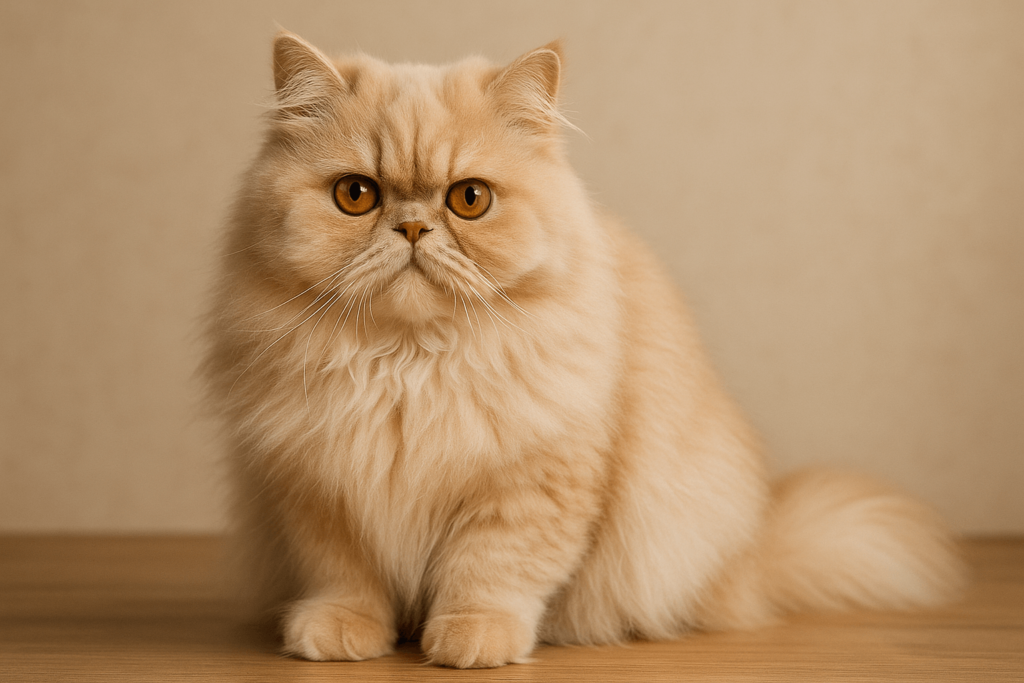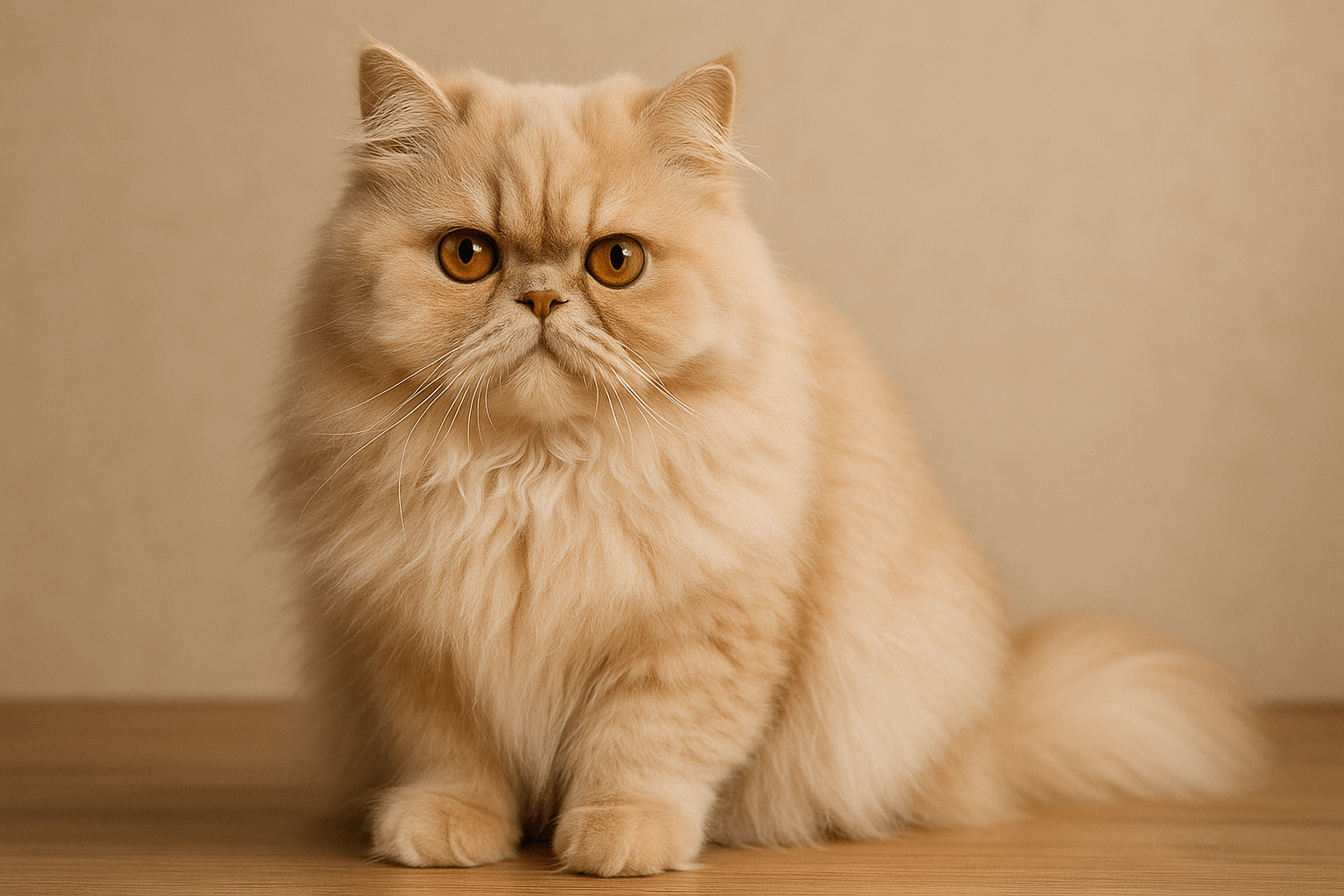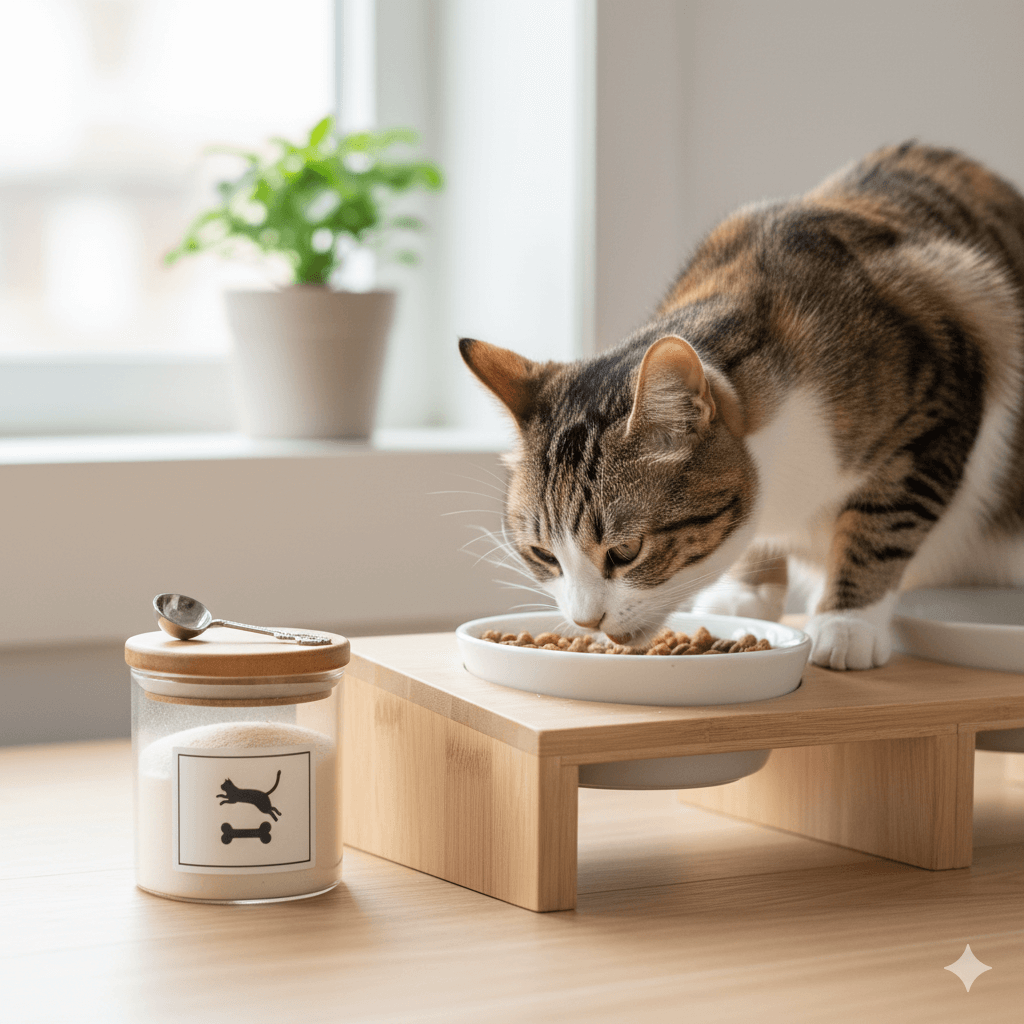Persian Cat Characteristics: The Epitome of Elegance and Charm
The Persian cat is one of the most beloved and recognizable cat breeds worldwide, known for its luxurious coat, striking appearance, and gentle demeanor. With a history spanning centuries, this breed has captured the hearts of cat enthusiasts for its regal presence and affectionate personality. Whether you’re considering adopting a Persian or simply curious about what makes them so special, understanding their unique characteristics can deepen your appreciation for these feline royalty members. From their physical traits to their temperament, let’s explore everything that defines the iconic Persian cat.
Physical Characteristics of Persian Cats
Persian cats are renowned for their distinctive physical features, which set them apart from other breeds. Their appearance exudes elegance and sophistication, making them a favorite among cat lovers.
Long, Flowing Coat:
The Persian’s most iconic feature is its long, silky coat, which comes in a variety of colors and patterns, including solid, tabby, and bicolor.Flat Face (Peke-Face):
Many Persians have a flat facial structure, known as the “peke-face,” giving them a doll-like appearance. However, some traditional Persians retain a more pronounced nose profile.Large, Expressive Eyes:
Their round, expressive eyes are often copper, blue, green, or odd-eyed, adding to their captivating charm.Stocky Build:
Persian cats have a sturdy, medium-sized body with short legs and a broad chest, contributing to their overall regal posture.Plush Tail:
Their tail is thick and bushy, perfectly complementing their long coat and enhancing their majestic silhouette.
These physical traits make Persian cats a true standout, embodying both beauty and grace in every way.

Temperament and Personality Traits of Persian Cats
Beyond their stunning looks, Persian cats are cherished for their calm and affectionate personalities. Their temperament makes them ideal companions for households seeking a peaceful and loving pet.
Gentle and Calm Nature:
Persians are known for their laid-back demeanor, preferring quiet environments over chaotic ones. They thrive in serene settings where they can relax undisturbed.Affectionate Companions:
These cats form strong bonds with their owners and enjoy spending quality time lounging nearby or cuddling on laps.Low Energy Levels:
Unlike some high-energy breeds, Persians are content with minimal playtime and prefer napping in cozy spots throughout the day.Independent Yet Social:
While they value independence, Persians also appreciate human interaction and will seek attention when they desire it.Adaptable to Routine:
Persians adapt well to structured routines, making them predictable and easygoing pets for families or individuals alike.
Their endearing personalities make Persian cats a joy to have around, blending elegance with warmth in perfect harmony.
Check this guide 👉Persian Cat vs Maine Coon: Best 7 Expert Tips!
Check this guide 👉Persian Tuxedo Cat: Best 7 Expert Tips!
Check this guide 👉Persian Cat Health Issues: Best 7 Expert Tips!
Pros of Owning a Persian Cat | Cons of Owning a Persian Cat |
|---|---|
Luxurious, eye-catching appearance | Requires daily grooming due to long coat |
Gentle and affectionate temperament | Prone to health issues like respiratory problems |
Adapts well to indoor living | Sensitive to extreme temperatures |
Ideal for calm households | Not very active or playful |
Forms strong bonds with owners | Needs regular vet check-ups |
Health Considerations for Persian Cats
While Persian cats are undeniably beautiful, they are prone to certain health issues that require careful management. Understanding these concerns ensures you can provide the best care for your feline friend.
Brachycephalic Syndrome:
Due to their flat faces, many Persians experience breathing difficulties, especially in hot or humid conditions.Polycystic Kidney Disease (PKD):
This genetic condition causes cysts to form in the kidneys, leading to renal failure if left untreated. Regular screenings are essential.Eye Problems:
Persians are susceptible to tear duct overflow and other eye-related issues, requiring routine cleaning to prevent staining.Dental Issues:
Their unique jaw structure can lead to overcrowded teeth, increasing the risk of dental disease. Regular vet visits help monitor oral health.Skin Conditions:
Their thick coats are prone to matting and skin irritation, necessitating meticulous grooming and hygiene practices.
By staying informed about these health considerations, you can ensure your Persian cat lives a happy and healthy life.
Grooming Needs of Persian Cats
One of the most important aspects of caring for a Persian cat is maintaining their gorgeous coat and overall cleanliness. Proper grooming not only enhances their appearance but also prevents health issues.
Daily Brushing:
To prevent tangles and mats, brush your Persian’s coat daily using a wide-toothed comb or slicker brush.Bathing Routine:
Bathe your Persian every few weeks to keep their coat clean and free of oils. Use a mild shampoo designed for cats.Eye Care:
Wipe away tear stains regularly with a damp cloth to avoid discoloration and infections around the eyes.Nail Trimming:
Trim your Persian’s nails every 2-3 weeks to prevent overgrowth and discomfort.Ear Cleaning:
Check and clean your cat’s ears weekly to remove dirt and wax buildup, reducing the risk of ear infections.
A consistent grooming routine keeps your Persian looking and feeling their best while strengthening your bond with them.
Tips for Choosing the Right Persian Kitten
Selecting the right Persian kitten involves more than just falling in love with their adorable faces. Keep these tips in mind to find a healthy and compatible feline friend.
Visit Reputable Breeders:
Choose breeders who prioritize ethical breeding practices and provide thorough health screenings for kittens.Observe Behavior:
Look for kittens that exhibit curiosity and friendliness, as these traits indicate a confident personality.Check for Health Signs:
Ensure the kitten has clear eyes, a clean coat, and no signs of respiratory distress before bringing them home.Ask About Parentage:
Learn about the parents’ temperaments and health histories to predict potential traits in the kitten.Prepare Your Home:
Set up a safe space with essentials like food, water, litter, and toys before bringing your new kitten home.
Taking these steps ensures you bring home a healthy and happy Persian kitten ready to become part of your family.
Common Misconceptions About Persian Cats
Despite their popularity, there are several misconceptions about Persian cats that deserve clarification. Addressing these myths helps paint a clearer picture of the breed.
They’re High-Maintenance Pets:
While grooming is essential, Persians are relatively low-maintenance in terms of activity levels and behavioral demands.All Persians Have Flat Faces:
Not all Persians have extreme flat faces; some retain a more traditional profile, depending on breeding standards.They Don’t Like Playtime:
Although less energetic than other breeds, Persians still enjoy interactive play with soft toys or feather wands.They’re Fragile or Delicate:
Despite their refined appearance, Persians are robust and resilient when properly cared for.They’re Only Suitable for Experienced Owners:
First-time cat owners can successfully care for Persians with dedication and willingness to learn.
Understanding these truths fosters a better appreciation for the breed’s versatility and charm.
Activities That Suit Persian Cats
While Persians aren’t known for their athleticism, they still benefit from engaging activities tailored to their calm nature. Here are some ideas to keep them entertained without overwhelming them.
Interactive Toys:
Soft plush toys or slow-moving mechanical mice encourage gentle play without stressing your cat.Cat Trees with Perches:
Low-profile cat trees with cozy perches allow Persians to climb and observe their surroundings comfortably.Window Perches:
Installing a window perch gives your Persian a front-row seat to watch birds and outdoor activity, stimulating their senses.Puzzle Feeders:
Puzzle feeders challenge their minds and reward them with treats, providing mental enrichment.Quiet Play Sessions:
Short, relaxed play sessions with wand toys or laser pointers offer light exercise without exhausting them.
Incorporating these activities into your Persian’s routine ensures they stay mentally and physically stimulated while respecting their laid-back lifestyle.
Frequently Asked Questions About Persian Cats
Are Persian cats good with children?
Yes, Persians are generally patient and gentle, making them suitable companions for older children who understand how to handle pets carefully.
Do Persian cats shed a lot?
Yes, Persians shed moderately year-round, so daily brushing is necessary to manage loose fur and minimize shedding.
How long do Persian cats live?
With proper care, Persian cats typically live between 12 and 17 years.
Can Persian cats be left alone during the day?
Yes, Persians tolerate being alone well, provided they have access to food, water, and a comfortable resting spot.
What type of diet is best for Persian cats?
A balanced diet rich in protein and low in carbohydrates, supplemented with omega fatty acids, supports their overall health and coat condition.
Embracing Life with a Persian Cat
Persian cats are truly a breed apart, combining breathtaking beauty with a sweet and gentle nature. While their luxurious coats and distinct features demand extra care, the rewards of sharing your home with such an elegant companion are immeasurable. By understanding their needs—from grooming and health to temperament—you can create a harmonious environment where your Persian thrives. Whether curled up on your lap or gazing at you with those soulful eyes, a Persian cat brings unparalleled joy and serenity to any household lucky enough to welcome them.
Understanding Bone Supplement for Cats: Best 7 Expert Tips! – Safe, vet-approved guidance for strong feline bones & balanced nutrition.
Bone Supplement for Dogs: Best 7 Expert Tips! – Expert guide to calcium, collagen & bone health for every life stage.
Understanding Can Cats Get Sunburn: Best 7 Expert Tips! – Protect your feline from UV damage with vet-backed prevention strategies.
How to Train a Seizure Alert Dog: Best 7 Expert Tips! – Learn expert-backed steps to nurture natural instincts into reliable, life-saving seizure alerts.





